First Version
Springfield Armory submitted this rifle, designed by John C Garand (of M1 Rifle fame) to the Light Rifle trials. It was unusual in that it used magazines mounted on top at a 45 degree angle, unlike the other entrants. It was a simple design, using only 44 parts and weighing a mere 4.9 pounds with a sling and 5-round magazine (OAL of 34 7/8 inches, and an 18 inch barrel). It was very well received in the trials, and the official report found it excellent in virtually all areas of evaluation – reliability in dust and rain, accuracy, recoil, and simplicity of design. Some felt that the magazine should be moved to the bottom, but most who fired it liked the magazine as it was.
–
Second Version
In the second round of trials, Garand and Springfield submitted a revised variant of the rifle. The primary difference was the relocation of the magazine to the bottom of the weapon, which necessitated some modifications to the design. The resulting gun was heavier (5.37 pounds with sling and magazine), and deemed less reliable and more difficult to disassemble.

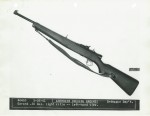
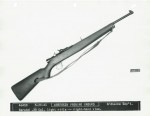
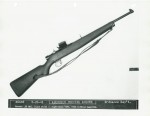
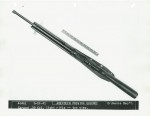
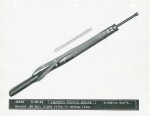
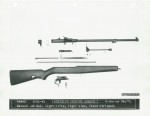
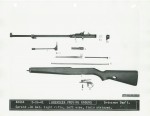
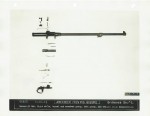
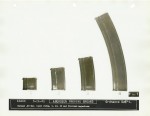
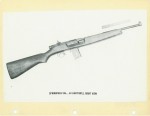

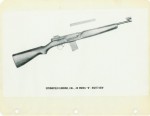
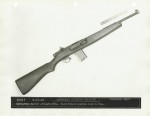
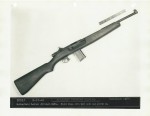
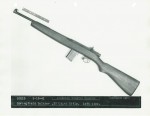
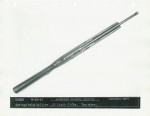
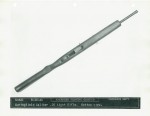
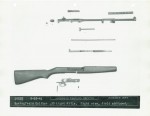
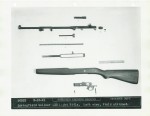
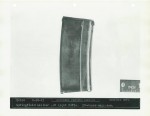
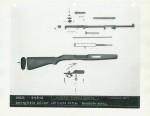
Thanks for putting up such a neat site, what a remarkable design. It’s not hard to imagine an evolution of the first, top-loading model as a great little weapon. Perhaps with a centered magazine and offset sights like the Australian Owen? The Aussies swore by the top-loading system as helped keep dirt and debris out, and let what did get in fall right out the bottom.
Does anyone have a Patent Number for the First one with the Top-Monted First Model?
I Think 2386205 is the Patent for the Second.
Thank You.
This is one of my favorite designs on your site, both for its ingenuity and for the fact that, had it been adopted, almost every American GI and many Allied troops would have been carrying weapons designed by the same man, John C. Garand. A few things jumped out at me when looking over the the original version with the top-mounted magazine once again.
First, it appears that the front and rear sights are offset to the left to clear the magazine, which is not surprising, though it is only noticeable in the photo labeled “First Garand Carbine – Top View.”
Second, the ejection port is offset to the left and more visible from the side than from the bottom. That and the angle of the port relative to the barrel seems to suggest that empty cases were ejected to the left. This has the advantage of placing the ejection port opposite the offset magazine, but it’s still an odd choice at a time rifles were designed to be fired from the right shoulder by everyone, even lefties.
Third, the cocking handle appears to be integral with the gas piston and so probably reciprocates with each shot. It is also asymmetrical in that it has a projecting ear only on the right side, likely hidden from view by the magazine housing when sighting down the barrel.
Cheers,
Matthew
Slung over a shoulder on a sling, it seems like the magazine would be less likely to catch on vines, etc., when moving through dense jungle. But as a support-role gun it would not have ridden well in a scabbard on the side of a Jeep–the side mounted magazine would have gotten in the way. Would probably be harder to get it through a tank’s hatch as well.
It does look like it would have been simpler to manufacture than the adopted carbine.
Part of this design, an ejector integral with the rear site, is detailed in U.S. patent no. 2444038.
http://www.google.com/patents?id=ldhjAAAAEBAJ&pg=PA1&dq=ininventor:%22John+C.+Garand%22&source=gbs_selected_pages&cad=2#v=onepage&q&f=false
I just love the 50 round magazine on this thing. It makes me wonder if it weren’t made moreso to prove the capability than with any actual goal of using such a massive, heavy magazine in a side/45 degree loader.